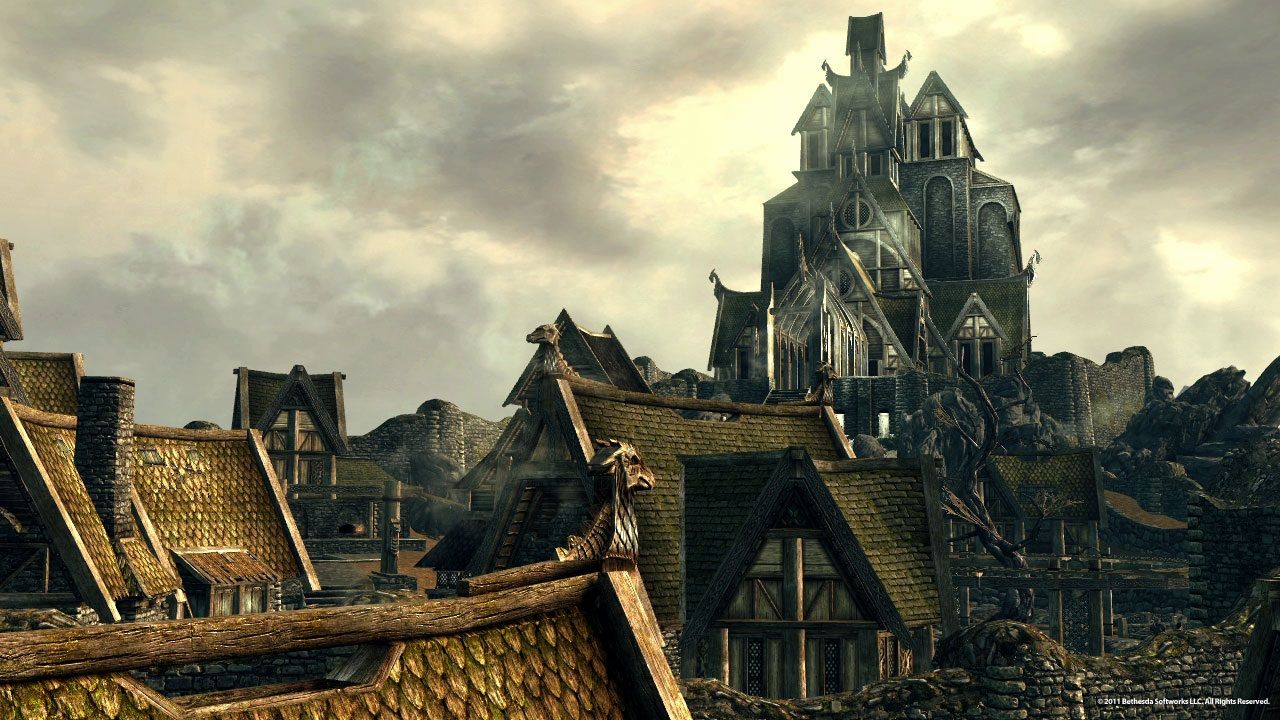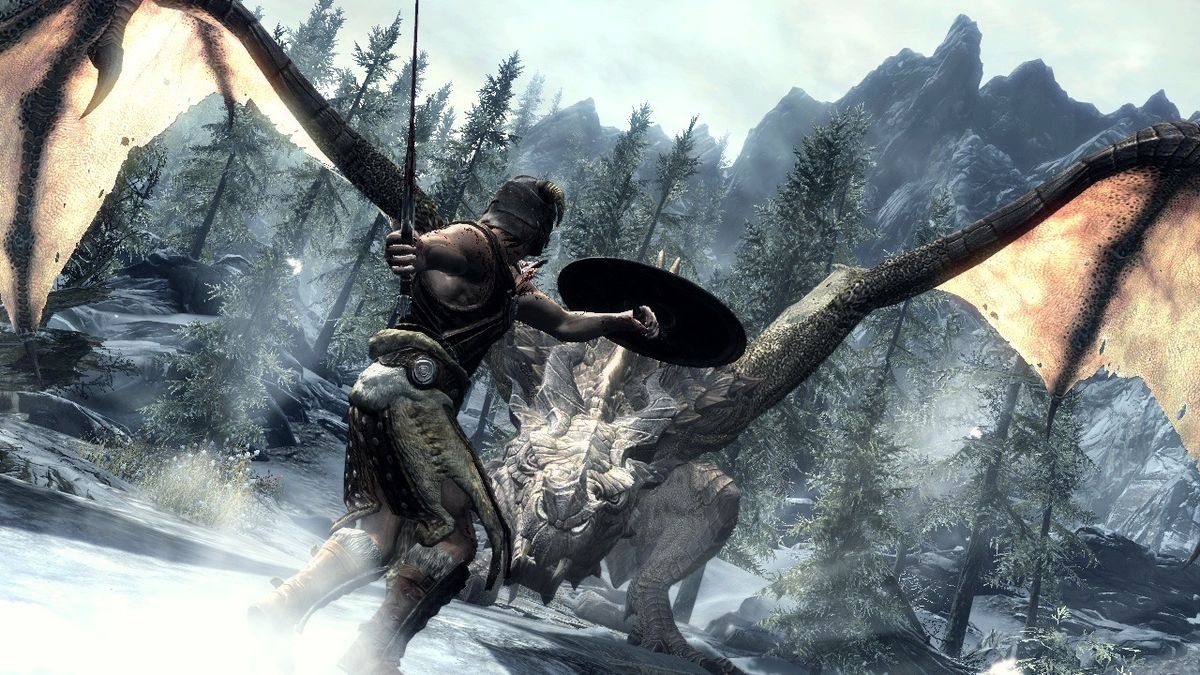Thousands of video games are released every year. Most of them come and go. And then there’s Skyrim.
Originally released in 2011, The Elder Scrolls V: Skyrim was an immediate phenomenon. It presented gamers with a vividly realized fantasy world, complete with dungeons, dragons, wizards, warriors, ancient prophecies, civil wars, and more. It revolutionized open-world RPGs and has remained an iconic genre favorite for more than a decade.
With releases on countless major platforms, Skyrim has sold more than 30 million copies worldwide. I am personally responsible for at least seven of those. Skyrim has been one of my favorite games for years. I’ve bought a copy on basically every console I’ve owned since 2011. It’s video game comfort food at its finest.
It has been my delight, in turn, to have the chance to have an email chat with Skyrim’s Lead Designer, Bruce Nesmith. Mr. Nesmith was kind enough to answer some questions about his experiences working on Skyrim, memories of the game, and his previous career writing tabletop RPGs.

Stew Shearer: It's been more than a decade and Skyrim is still a video game bestseller. Why do you think it's still so popular and iconic after all this time?
Bruce Nesmith: In some ways, The Elder Scrolls V: Skyrim was the right game at the right time. It was built on the popularity of The Elder Scrolls IV: Oblivion. The Lord of the Rings movies were being released, increasing interest in fantasy, and Skyrim was intentionally positioned to be mainstream fantasy to appeal to Lord of the Rings and Dungeons & Dragons fans. Add to that the deep experience of the talented team at Bethesda, and all the stars were aligned.
We made the game we always wanted to play. It was both deep and wide, which could only be done by building on prior code and experience. The ultimate freedom to make your own choices had tremendous appeal. Although some other games featured an open world, it was not common at that time. Skyrim blew those doors open. Combine that with the amazing art, gameplay, and the ability to play for hundreds of hours and Skyrim became irresistible. Even ten years later it is still one of the most played games on all platforms.
SS: You have mentioned, in previous interviews, that you were especially proud of the Radiant Story system. What worked best about the Radiant Story system, in your opinion, and what do you feel could have been implemented better?
BN: I do an entire hour-long presentation about Radiant Story for universities and round tables, so it will be difficult to condense my answer here.
The best aspect of Radiant Story in my opinion is the way it makes the world feel like it sees you. When you do something, the world responds, acknowledging that you are an active part of it. The classic example I use is when you drop a powerful weapon, people nearby will rush to argue over it, and then a guard comes to break it up.
Things like that had never been done before in a roleplaying game. Part of the price for that is creating all that extra content that isn't strictly adventure. I wish we had had more time or staff to build more variety of responses, so that each felt more special.
SS: Is there a single particular moment in Skyrim that you're most proud of?
BN: In one of the expansions, I added the Ebony Knight. We had been hearing from players that sometimes the game felt too easy for higher-level characters. So I endeavored to make a really tough challenge. I threw away all the leveling constraints that we normally placed on enemies and just made him as tough as I could. To this day he remains one of the more popular fights for high-level characters.

SS: A common refrain from gamers is that Skyrim is best experienced with mods. I personally enjoy the Vanilla game, with a few small tweaks at most (Survival Mode is a personal favorite). How do you feel about that sentiment?
BN: I embrace all the amazing mods and modders. A game is for the player, not the maker. Every player is different and has different tastes, and the mods and mod community appeals to all of them with mind-boggling variety.
To be honest a few of the mods are things we wish we could have added ourselves but didn't for one reason or another. So I say, bring on whatever mods bring you joy. It's your game, play it how you want.
SS: You had an impressive career in the tabletop RPG world before working on the Elder Scrolls games. This includes some high-profile Dungeons & Dragons projects for TSR. Any personal favorites?
BN: Two TSR projects stand out for me. One is the Ravenloft Boxed Set. Getting to turn Tracy Hickman's adventure into a campaign setting was a delight. The overwhelming response from the players warmed my heart. I love that setting and even took my players to it recently in my D&D 5e campaign. The other is the fourth edition Gamma World rules book. Many other projects I worked on were more popular, but something about Gamma World has always drawn me to it.
SS: Empire or Stormcloaks?
BN: Stormcloaks. Duh!
SS: You're currently working as a novelist. Is there anything you'd like to share about your current writing projects?
BN: I'm writing a series of Urban Fantasy novels, featuring Loki, who is working as a stage magician in the Chicago suburbs. If you accept the premise that history is written by the victors, Loki got a raw deal from the other Norse gods, who unfairly blamed him for many things, although he is certainly no saint. After hiding out for almost a thousand years, he is forced back into the Nine Realms to save them from a dire threat.
The first two books, Mischief Maker and Odin's Escape, are available in print and on Kindle through Amazon. I'm currently well into writing the third book, which should be available in early 2023.

